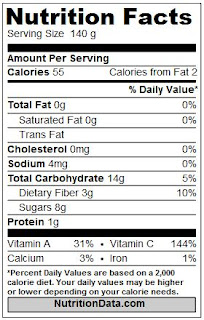Famous Celebrities Who Were Institutionalized

Checking in the loony bin to get help for
mental illness can be a double-edged sword. On one side you are improving your chances of bouncing back. On the other side people denigrate you for being so much as associated with a mental facility.
When famous persons get committed to a mental institution, this inconvenience is multiplied tenfold. Their immediate social circles are not the only one in the know; the entire planet is. Before long the blogosphere is already roasting them alive. This is how fame collects its dues.
Fame may have brought these celebrities there in the first place. Mental conditions seem to dovetail well with popularity, as many people in this list would demonstrate.
Britney Spears

2007 – pop culture pundits remember this as the year Britney Spears literally went lady gaga. Coming from a divorce the year before, the pop superstar cranked up the crazy and shaved her head. It has been a downward spiral since.
In 2008 Spears finally checked into the psychiatric ward of the Ronald Reagan UCLA Medical Center. The weeklong meds there may have done her some good as she released a well-received album later that year.
Carrie Fisher

No one would have thought Carrie Fisher’s nerves would be having a
Star Wars
of their own. Decades after her star turn in that saga, Carrie Fisher latched on to drugs and alcohol to treat a looming insanity.
At 40, she finally entered a mental institution for
bipolar disorder. There, she would not sleep for days on end and think persons on the TV screen were directly talking to her.
With the right meds however, she was able to turn her life around. To this day, the erstwhile Princess Leia is undergoing treatment, including electroshock therapy.
MindSoothe – promotes balanced mood, emotional health and feelings of well-being
James Taylor

James Taylor is unique in this list for positively seeing through his nine-month stay in the funny farm. He even sounds grateful for it on his hit song “Fire and Rain.” Apparently the stay kept him from serving in the Vietnam War, thereby saving him.
James was near graduating from high school when a
deep depression set in, forcing him into Massachusetts’ McLean Hospital in 1965. Making the most of his time there, he continued studying through the facility’s partner school, Arlington.
Joey Ramone

Punk rock king Joey Ramone endured schizophrenia and
social anxiety while growing up. But he did not enter a mental hospital for years – until he brandished a knife at his mother and sibling. He remained there for a month.
In the years thereafter, Joey reformed himself as a rock god, worshipped by thousands of sad boys like him.
SocialFear Relief - relieves social fear, anxiety, nervousness, shyness and stage fright
Marilyn Monroe

Marilyn Monroe was as famous for her feeble mental state as she was for her blonde bimbo act. In hindsight it was her genes that directed her fate. Her mother also has a mental illness and perished during institutionalization.
Historians know Marilyn grew sick of being used like a rag by men in high places. She also yearned to be treated right by Hollywood, to be given roles that showcased her acting range. In 1961, a doctor misled her into checking into a mental hospital, the very place she was scared of.
Life was not any better after she got out. Men in power continued passing her around until her untimely demise.
Margot Kidder

Fans of the
Superman
movies would never forget that scene in which a nutty, nude Lois Lane hides around a woodpile.
In a curious case of life imitating the art, the actress who portrayed her, Margot Kidder, was committed to a mental facility in 1996 for manic depression.
Melancholy Lift - relieves feelings of melancholy, sadness, grief and weepiness
Vivien Leigh

Vivien Leigh’s legendary beauty belies her brain’s disarray. Even during the peak years of her popularity, she languished in
manic depression. But no one in the movie-going public had any idea. Doctors were notorious then for covering mental illnesses up and employing crude treatments for them.
Vivien was winning Academy Awards even as the mental disease continued hounding her. It came to a head with an admission to a mental facility plus sessions of electroshock therapy. Hollywood urban legend has it that the sessions burned parts of her head.
Winona Ryder

Her 1990 stint in a mental hospital foreshadowed her performance in 1999’s
Girl, Interrupted
. Exhausted, anxious and depressed, at a time when she had just withdrawn from
The Godfather: Part III
cast, Winona was institutionalized.
She checked out after only a few weeks. In interviews afterwards, she said her confinement was for naught, that it offered nothing in the way of denouement to her troubles. Years later, Winona was embroiled in a shoplifting incident.
SAD Soother - relieves depression related to seasonal affective disorder
Yoko Ono

John Lennon’s paramour attempted suicide after divorcing her first husband in the US. Yoko’s parents were so concerned they returned her to Japan to be institutionalized.
She remarried afterwards but that relationship also went up in flames, although not before it gave her a bundle of joy.
***











